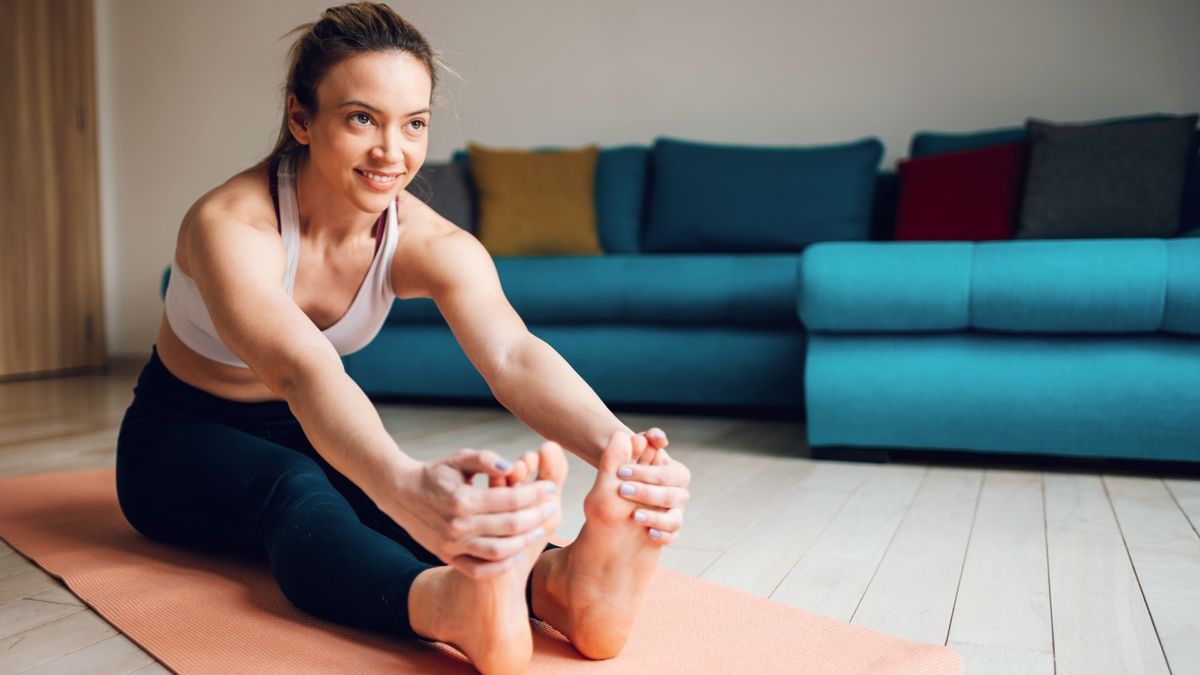The Pilates roll-up exercise is low-impact, bodyweight and perfect for strengthening your core muscles and building spine flexibility. I’ve been adding it to my exercise routine recently, and it’s helpful if you spend a lot of time sitting at your desk.
To do the Pilates roll-up exercise, lay on your back on one of the best yoga mats, curl upwards to a seated position, then uncurl your body as you roll back down to lay flat on your back again. It’s tough on the abdominal muscles but also uses a curling and uncurling motion to help target the spine.
Below, I cover how to do the Pilates roll-up, the benefits and muscles targeted, plus how you might add the exercise to your routine.
What is the purpose of the roll-up in Pilates?
Pilates is brilliant for strengthening your core, improving posture and boosting flexibility and mobility while increasing muscle tone and overall strength. It’s amazing what an hour of Pilates can do for your body if you practice consistently.
The move is a staple exercise that improves spinal mobility and builds core and hip flexor strength. The Pilates roll-up for beginners is less accessible if you have tight hamstrings, so you may want to modify and start with softly bent knees. The aim is to have both legs extended while pressing the backs of your legs into the mat; the exercise should also improve posterior chain flexibility.
How to do a Pilates roll-up
Here’s a step-by-step according to Pilates Anytime:
- Lie on your back with your legs extended and together
- Reach your arms overhead with your palms facing upward
- Inhale as you reach your arms overhead, curling your upper body away from the floor, leading with your head and shoulders
- Exhale as you move toward a seated position, peeling your spine away from the mat vertebrae by vertebrae
- Round forward and draw the crown of your head toward your legs. Arms should be parallel to the mat
- Draw your stomach toward your spine, engaging your abdominal muscles and using them to pull your torso forward
- Inhale, then roll back down to the starting position.
Pilates Anytime recommends avoiding momentum or jerky, forceful movements. Instead, move with fluidity and control and use your breath to assist — avoid holding your breath. If you’re working with an injury, speak with a qualified medical physician before starting a new exercise.
Why can’t I do a roll-up in Pilates?
There has been some debate on whether or not the roll-up exercise can harm the spine, especially for those with tight hamstrings or existing back pain.
For example, one instructor, published in the Pilates Instructor Academy, claims the Pilates roll-up doesn’t stretch the hamstrings or lower back, and for those with tight hamstrings, could increase lumbar spine instability by overloading already unstable muscles.
Other Pilates instructors say not to blame the exercise, instead modifying to a seated position (known as a half roll-down), adjusting the exercise to include straps and resistance bands, or placing a small pillow or towel underneath the back that you can press into while performing the roll-up.
Importantly, your pelvis must be stable throughout; imagine drawing your hands toward your feet and curling your spine as if you have a large ball placed on your thighs that you must reach over.
Strength and mobility should walk hand in hand. If you have tight hamstrings or back muscles, limited flexibility in your spine, or weak core muscles, you might find it difficult to curl your spine and sit up at the same time. Try improving core strength and posture and adding mobility exercises to your routine first, or ask your Pilates instructor to adjust the exercise for you.
What muscles do Pilates roll-ups target?
The roll-up primarily targets the abdominals, hip flexors, hamstrings, back muscles and spine. Depending on your unique anatomy, you might feel the exercise more in one place than another. In theory, the roll-up is functional, improving your ability to sit up from a laying position, however, if you have any problems with your back, speak with a Pilates instructor or physician first.

